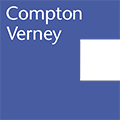Origins of the Collection
British Folk Art Collection
Andras and Dorothy Kalman: English Naïve Art Collection: Compton Verney: a personal view
In the early fifties my father Andras Kalman had a gallery in Manchester and would regularly go to London to look for paintings and to buy frames. He often visited auction houses and it was at a sale of pictures belonging to a Lady West that he bought his first ‘primitive’ painting called Bear Baiting. My father was captivated! He quickly bought four or five pictures of farm animals; – a misshapen sheep or a fat heifer – these paintings were amusing and decorative.
When my father opened a gallery in London and became a little more successful – he could afford to go to many more auctions and antique shops. He was looking for inexpensive, amusing pictures – he didn’t want conventional, late Victorian paintings. When he moved into a larger house in London he decided to fill the hall, dining room and the walls going up the stairs with primitive paintings.
I remember my father would take our dog out for a walk after dinner; often armed with a large torch, he’d walk around Pimlico and the Fulham Road peering into shop windows. In the sixties there was no competition for English naïve paintings – for most people the work was almost too crude. My father began collecting ‘by accident’ – he didn’t set out to become a collector!
“…he gathered eight or nine pictures and asked himself …’Do I want more?’ …suddenly, his dining room was full!”
He would have bursts of looking; getting catalogues from provincial auction houses and ‘runners’ would come to see him with paintings they thought he would like. If my father bought a very good painting – he’d keep it. He became his best customer!
He was in friendly competition with his close friend Christopher Bibby who shared his enthusiasm for primitive paintings. Around 1965 Christopher opened the Rutland Gallery – an elegant space in Bruton Street, London.
My father had a rare, discerning eye for the fresh and original. The collection that he slowly built up of pristine, non academic paintings depicting ordinary daily life gave him endless delight. He said ‘Naïve art has a freshness, crispness, originality’. He loved the humour, charm and colour.
His eclectic taste led him to open a gallery in the King’s Road, he then extended his business to include an old tailor’s workshop that he turned into an unusual and beautiful gallery selling English Folk art. He also opened a tearoom in Nettlebed in Oxfordshire. The sign advertised ‘Tea and Art’ on the basis that ‘not everybody needs art but everybody needs tea’!
As the collection grew – he was keen to find a permanent space for it. David Sylvester – the art critic of the Sunday Times and later of the Times Colour Supplement ran a feature on his interest in English Naïve art. In around 1972 The Arts Council became interested in the collection and sponsored a tour around the country to include Kettle’s Yard, Cambridge; Aberdeen Art Gallery, Scotland; The University of York; The Harrogate Festival; Yorkshire; The Welsh Arts Council Galleries, Swansea; The Scottish Arts Council Galleries, Edinburgh; Stirling University, Scotland; The National Museum of Wales, Cardiff.
In 1973, Beatrix Rumford, Director of the Abbey Aldrich Rockefeller Folk Art Museum in Willliamsburg, Virginia visited England to research the kinship that exists between the folk art of America and Britain. She later invited the English Naïve Art Collection to travel to Williamsburg and to the American Museum of Folk art in New York. This resulted in a nationwide tour of the U.S.A. organised by the Smithsonian Institute of Washington. After this tour the collection travelled to the Kunstmuseum, Gothenburg, Prins Eugens Museum, Waldemarsudde, Stockholm, Kunstforeningen (Danish Arts Council), Copenhagen, Amos Anderson Museum, Helsinki; Kulturaustausch (German Arts Council) Stuttgart, Clemens –Selz Museum.Neuss, Cologne .
Over this period, the collection had been added to and it soon became apparent that it had outgrown our home. In 1987 Bath was chosen as the new base for the collection where it was housed in the Countess of Huntingdon’s Chapel. In the early nineties Hankyu Corporation invited the collection to Osaka in Japan as a flagship for their British Trade Fair. It proved to be a hugely popular exhibition.
In 1993 The Peter Moores Foundation acquired the Collection – it is now elegantly housed at Compton Verney in Warwickshire.




